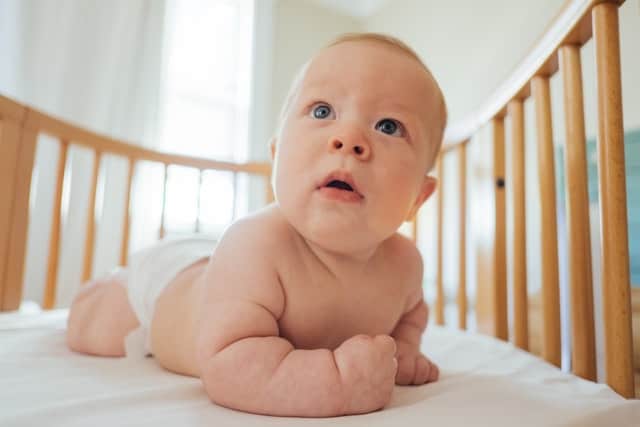CPSC Moves to Ban Some Pillow Crib Bumpers as Infant Deaths Rise
November 2, 2020
Safety Experts Have Been Urging the CPSC to Take Action & Ban Dangerous Bumpers
Padded crib bumpers must meet several new requirements—and contain new warning labels—or they’ll be banned for sale in the U.S. That’s what regulators at the Consumer Product Safety Commission (CPSC) are currently seeking, and they’re in the process of finalizing a new mandatory rule for bumpers.
The move comes on the heels of findings that show a surge in bumper-related infant deaths in recent years. In fact, from 2008 through 2015, bumper deaths tripled, when compared to those from 1985 through 2007.
Now, officials are looking to get dangerous crib bumpers out of circulation to protect infants and save lives.
Brief Background: Dangers of Crib Bumpers
Padded crib bumpers put infants at risk of serious and fatal injuries due to:
- Suffocation: The bumper alone suffocates infants in about 67% of (or 2 in every 3) asphyxia-related infant deaths. Other clutter, like blankets, stuffed animals, and pillows, is involved in about 33% of these fatalities.
- Entanglement: This occurs when threads, ties, or decorative components loosen and wrap around part of a baby. In about 50% of these entanglements, the bumper wraps around the infant’s head, neck, and/or mouth, raising the risks of strangulation and suffocation.
- Entrapment: Infants can become wedged between the bumper and another object in the crib (like a sleep positioner), blocking their airways.
- Choking: Threads, ties, stuffing, and decorative elements can all present choking hazards to infants.
While some states, like Maryland, have pushed to issue their own restrictions for crib bumpers, there are no federal standards in place at this time.
Proposed Requirements for Crib Bumpers
The CPSC’s proposed standards for bumpers will incorporate the existing voluntary rules by reference (ASTM F1917-12, Standard Consumer Safety Performance Specification for Infant Bedding and Related Accessories) while making some changes. The changes are focused on minimizing the risk of bumper injuries and deaths.
Modifications include (and are not limited to):
- Defining “crib bumper” and “crib liner”
- Updating the bumper thickness and strength requirements
- Adding crib bumper firmness and airflow requirements
- Revising the crib bumper warning and placement requirements while adding a permanence requirement
It’s unclear when the proposed requirements will be finalized. When they are, however, there may still be several months before the rule takes effect.
CPSC Faces Criticism for Delayed Action in the Wake of the Inclined Sleeper Recalls
Efforts to prevent infant deaths would normally be met with praise from safety advocates. Yet, they have criticized CPSC officials about their response to infant bumper deaths, saying regulators should have acted sooner.
In fact, medical experts and others have been urging officials to impose stricter regulations on bumpers since 2007, when a report published in The Journal of Pediatrics concluded the following:
Crib and bassinet bumpers are dangerous. Their use prevents only minor injuries. Because bumpers can cause death, we conclude that they should not be used.
In 2008, the American Academy of Pediatrics (AAP) issued a recommendation, urging caregivers not to use bumpers in cribs because of the serious risks they present to infants.
Well over a decade later, the new bumper safety rules are finally getting closer to becoming a reality. Unfortunately, however, the delay in action is becoming a pattern, safety advocates say. That’s because it’s not the first them they’ve accused the CPSC of dragging its feet with regards to infant safety issues and dangerous crib-related products.
Since 2019, safety advocates have leveled the same allegations at regulators with regards to the inclined sleeper recalls, saying officials didn’t act quickly enough to issue recalls when studies were reporting how dangerous and deadly these cribs could be.
Despite the criticism, many are hopeful that the bumper ban and inclined crib recalls will save babies’ lives. As researchers noted in a 2015 study:
Preventing bumper deaths and injuries will only be possible if traditional bumpers are removed from the marketplace at the national level.
When Dangerous Products Hurt Children
Tragically, like bumpers and inclined cribs, many items that hurt children are only regulated or pulled off the market after they cause harm. For parents of the victims, new safety restrictions or recalls won’t do much to reverse their children’s injuries or bring them back from a fatal accident.
Filing claims against negligent manufacturers, however, can help. It can empower families with options for holding negligent parties accountable. It can also help victims and families seek the justice and recoveries they deserve.
